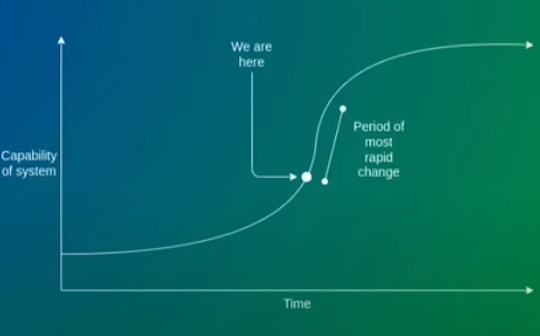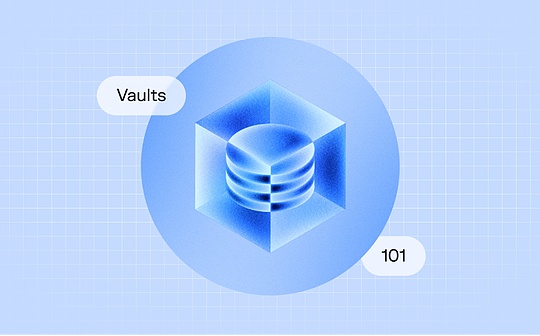
Author: Vitalik, founder of Ethereum; Translation: 0xjs@作 作 作 作 作 作 作
On March 13th, Dencun was activated for hard splitting, which opened one of the long-awaited functions of Ethereum: Proto-Danksharding (also known as EIP-4844, also known as BLOB).Initially, the fork reduced Rollups’s transaction costs by more than 100 times, because Blob was almost free.On the last day, we finally saw that the number of blobs surged, and as the BlobScriptions protocol began to use them, the cost market was also active.BLOB is not free, but they are still much cheaper than callData.

Figure left: With BlobScriptions, Blob’s usage finally soared to 3 goals per block.
Right: BLOB cost therefore “enter the price discovery mode”.Source: https://dune.com/0xrob/blobs
This milestone represents a key change in the long -term roadmap of Ethereum:BLOB is no longer “from zero to one”, but the time when it becomes “from one to N”.Starting here, important expansion work, whether the number of blobs or increasing Rollups will continue to use the ability of each BLOB, it will continue, but it will be more increasing.The basic paradigm of Ethereum as an ecosystem and the basic paradigm of extension related changes has gradually become the past.also,The focus has been slowly transferred and will continue to slowly transfer from the L1 problem (such as POS and expansion) to the problem of closer to the application layer.The key question of this article will be: Where will Ethereum go?
The future of Ethereum expansion
Over the past few years, we have seen that Ethereum has slowly transformed into an ecosystem centered on L2.The main applications have begun to move from L1 to L2, and the payment has begun to be based on L2 by default. Wallets have begun to build a user experience around the new multi -L2 environment.
From the beginning,A key part of the roadmap centered on rollup is the idea of independent data available in space available: The special space in the block, EVM cannot access the space, but the data of the 2 -layer project can be saved, such as rollup.Since the data space cannot be accessed by EVM, it can be broadcast separately from the block and verify it separately from the block.In the end, a technology called data availability sampling can be used for verification. This technology allows each node to only verify that the data is posted correctly by randomly checking a few small samples.Once realized, the Blob space can be greatly expanded; the ultimate goal is each slot 16 MB (about 1.33 MB per second).

Data availability sampling: Each node only needs to download a small part of the data to verify the availability of the entire data.
EIP-4844 (also known as “Blob”) did not provide us with data usability sampling.But it does establish a basic scaffolding in this way. From here, data availability sampling can be introduced, and BLOB counting can be added behind the scenes. All these do not require any participation of users or applications.In fact, the only “hard fork” needed is simple parameter changes.
Need to continue from here to develop:
1. Gradually increase the BLOB capacity, and finally realize the complete vision of the data availability sample of 16 MB per slot data space.
2. Improve L2 to better use the data space we have
Turn das into reality
The next stage may be the simplified version of DAS, called PeerdasEssenceIn Peerdas, a large part of each BLOB data is stored in each node (eg, 1/8), and the node maintenance is connected to many peering points in the P2P network.When the node needs to sample specific data fragments, it will ask it to know that it is one of the peers responsible for storing the data fragment.
 If each node needs to download and store 1/8 of all data, PEERDAS theoretically allows us to expand Blob 8 times (actually 4 times, because the redundancy of the code deletes is doubled).Peerdas can be launched over time: we can have a stage. Professional pledges continue to download complete BLOB, while separate pledges only download 1/8 data.
If each node needs to download and store 1/8 of all data, PEERDAS theoretically allows us to expand Blob 8 times (actually 4 times, because the redundancy of the code deletes is doubled).Peerdas can be launched over time: we can have a stage. Professional pledges continue to download complete BLOB, while separate pledges only download 1/8 data.
In addition, EIP-7623 (or 2D pricing, etc.) can be used to set more stringent restrictions on the maximum size of the maximum size of the execution block (that is, the “conventional transaction in the block”), which makes the BLOB target and L1 GAS limitIt becomes safer.In the long run, the more complicated 2D DAS protocol will let us go all the way and further increase the BLOB space.
Improve L2
At present, there are four key places on the 2nd floor agreement that can be improved.
1. Use data to compress more effectively by bytes

I wrote about data compression overview before: In short, a transaction will occupy about 180 bytes of data.However, a series of compression technology can be used to reduce this size in several stages; through the optimal compression, we may reduce the size of each transaction to less than 25 bytes.
2. Optical data technology, only use L1 to protect L2 in special circumstances to protect L2

Plasma is a type of technology that allows you to obtain equivalent security of some applications as some applications, and at the same time keep the data on L2 under normal circumstances.For EVM, PLSMA cannot protect all tokens.But the structure inspired by Plasma can protect most token.A much simpler structure than Plasma can greatly improve today’s effectiveness.L2, which is unwilling to put all data on the chain, should explore such technologies.
3. Continue to improve the relevant constraints
Once Dencun is activated hard, set Rollup to the Blob introduced by it will be 100 times cheaper.The use of Base Rollup immediately soared:
 In turn, the Base reached the upper limit of its internal GAS, resulting in the surge of expenses.This has made people more widely aware that Ethereum data space is not the only thing that needs to be expanded: Rollup also needs to expand internally.
In turn, the Base reached the upper limit of its internal GAS, resulting in the surge of expenses.This has made people more widely aware that Ethereum data space is not the only thing that needs to be expanded: Rollup also needs to expand internally.
Some of them are parallel; Rollups can realize things similar to EIP-648.But the same important thing is the interaction effect between storage and computing and storage.This is an important engineering challenge for rollup.
4. Continue to improve security
We are far away from the world that is truly protected by code.In fact, according to L2Beat, only these five (only Arbitrum is all EVM) even reached what I call the “first stage”.

This requires a positive solution.Although we have not yet had sufficient confidence in the complex code of optimism or SNARK -based EVM verification device, we can definitely go to half and have a security committee that can restore behavior.(For example, I recommend using 6 of 8; ARBITRUM is executing 9 in 12).
The standards of ecosystems need to be stricter: so far, we have a tolerance for any project that claims to “walk on the decentralization road”.By the end of this year, I think our standards should be improved, and only when the project actually reaches at least 1 stage, we should regard it as rollup.
Since then, we can be cautious to the second stage: a world supported by codepup, only when the code is “proved to be inconsistent with ourselves”, the Security Council can intervene (for example, accept two incompatible state roots, orTwo different implementations are given different answers).One way to safely achieve this is to implement multiple proofers.
What does this mean for the wider development of Ethereum?
In ETHCC’s speech in the summer of 2022, I gave a speech to describe the development status of the Ethereum as the S curve: we are entering a very fast period of transition. After the rapid transformation, the development will slow down again, because L1 gets the L1 obtaining it.Consolidate and focus on users and application layers.

Today, I think we are undoubtedly at the right side of the S -curve.As of two weeks ago, the two biggest changes in the Ethereum blockchain -the transition of the right to the equity and the re -architecture BLOB -has become the past.Further changes are still important (for example, Verkle tree, single grooves final certainty, and internal accounts abstraction), but their degree is not as violent as the equity certificate and shard.In 2022, Ethereum was like an aircraft that replaced the engine during flight.In 2023, it replaced the wing.Verkle tree transition is the main and really important transition (we have already possessed the test network for this); the others are more like replacing the tail fin.
The goal of EIP-4844 is to make a large disposable change at one time in order to set Rollup to achieve long-term stability.Now BLOB has been launched. In the future, it can be upgraded to a complete Danksharding with 16 MB BLOB. It can even switch the encrypted technology to Stark through the 64 -bit Goldilocks field without requiring Rollup and the user to take any further operation.It also strengthened an important precedent: Ethereum development process was implemented in accordance with long -term and easy -to -understand roadmaps, and applications (including L2) built with the concept of “New Ethereum” obtained a long -term stable environment.
What does this mean for applications and users?
In the first ten years of Ethereum, a training stage is largely: the goal is to start Ethereum L1, and applications mainly occur in a small group of enthusiasts.Many people believe that the lack of large -scale applications in the past ten years is useless.I have always opposed this: Almost all non -financial speculative encrypted applications depend on low costs.Therefore, although we charge high fees, we should not be surprised by us to see financial speculation!
Now we have blobls, this key constraint that has been hindering us has begun to disappear.The cost is finally much lower; I said seven years ago that the cost of each transaction of the currency Internet should not exceed five cents, and now it is finally realized.We have not completely got rid of the dilemma: if the amount of usage is too fast, the cost may still increase, and we need to continue to work hard to further expand BLOB (and expand Rollups alone) in the next few years.But we saw … uh … the dawn at the end of the dark forest.
 This means for developers: we no longer have any excusesEssenceUntil a few years ago, we also set a low standard for ourselves. The application of the constructed applications obviously could not be used on a large scale, as long as they worked as a prototype and reasonably decentralized.Today, we have all the tools we need, in fact, we will have most tools we have to build applications with password punk and user -friendly.So we should go out to do this.
This means for developers: we no longer have any excusesEssenceUntil a few years ago, we also set a low standard for ourselves. The application of the constructed applications obviously could not be used on a large scale, as long as they worked as a prototype and reasonably decentralized.Today, we have all the tools we need, in fact, we will have most tools we have to build applications with password punk and user -friendly.So we should go out to do this.
Many people are meeting the challenge.Daimo wallet clearly describes himself as Venmo on EthereumIt aims to combine the convenience of Venmo with the decentralization of Ethereum.In the decentralized social field,Farcaster combines real decentralization and excellent user experienceEssenceUnlike the previous wave of “social networks”, ordinary users of Farcaster are not for gambling -the key tests to be truly sustainable through encrypted applications.

The article above is published on the main FarCaster client Warpcast. The screenshot is taken from the FarCaster +Lens client Firefly.
We need to make persistent efforts on the basis of these success and extend it to other applications, including identity, reputation and governance.
The application that constructed or maintained today should consider the Ethereum in the 2020s when designing
The Ethereum ecosystem still has a large number of applications, which are basically operating around the “Ethereum” workflow of the “2010 Times”.Most ENS activities are still on the first floor.Most tokens issued on the first floor, and did not seriously consider ensuring that the bridge token on the 2nd floor was available (for example, fans who saw ZELENSKYY MEMECOIN appreciated the tokens’ continuous donations on Ukraine, but complained that the cost of L1 was too expensive.To.In addition to scalability, we are also behind in terms of privacy: POAP is on the open chain, which may be the right choice for some use cases, but it is not the best choice for other cases.Most DAO and Gitcoin Grants still use a completely transparent chain to vote, which makes them vulnerable to bribery (including traceability airdrop), and this has proven to be seriously distorted.Today, ZK-SNARK has been in, but many applications have not begun to use them correctly.
These are the hard work teams that must deal with a large number of existing user bases, so I will not blame them to not upgrade to the latest technical wave at the same time.But soon, this upgrade needs to occur.The following are some of the main differences between the “Ethereum Workflow of Ethereum in the 2010s” and “Ethereum Workflow in the 2020s”:

basically,Ethereum is no longer just a financial ecosystem.It is a full stack alternative of most “centralized technology”, and even provides some functions that centralized technology does not have (such as applications related to governance)EssenceWe need to consider this wider ecosystem.
in conclusion
-
Ethereum is still in a decisive change in the era of era from the era of “very fast L1 progress” to L1.
-
We still need to complete the expansion.This work will be more behind the scenes, but it is still important.
-
Application developers no longer build prototypes; we are building tools for millions of people.In the entire ecosystem, we need to adjust our mentality accordingly.
-
Ethereum has upgraded from “just” a financial ecosystem to a more thorough independent decentralized technology stack.In the entire ecosystem, we also need to adjust their mentality accordingly.








